A "songster" is a wandering musician, usually but not always African-American, of the type which first appeared in the late 19th century in the southern United States.
A "songster" is a wandering musician, usually but not always African-American, of the type which first appeared in the late 19th century in the southern United States.
The songster tradition both pre-dated and co-existed with blues music. It began soon after the end of slavery and the Reconstruction era in the United States, when African-American musicians became able to travel and play music for a living. [1] Black and white musicians shared the same repertoire and thought of themselves as "songsters" rather than "blues" musicians. [2]
Songsters generally performed a wide variety of folk songs, ballads, dance tunes, reels and minstrel songs. Initially, they were often accompanied by non-singing "musicianers", who often played banjo and fiddle. Later, as the guitar became more widely popular, the songsters often accompanied themselves. [3]
Songsters often accompanied medicine shows, which moved from place to place selling salves and elixirs. As entertainers, songsters had the task of enticing a public, to whom the concoctions were then offered. One published in 1886 by Professor Lorman, "The Great Disease Detective" of Philadelphia. "The Lorman's Indian Oil Star Specialty SONGSTER" announced on the booklet's title page that it contained "an entirely new and original collection of Songs now being sung nightly by the members of the above named excellent company, together with all the popular Songs of the day." Along with ads for Lorman's full range of medicines, the songster included a cast list introducing an "ever welcome Vocalist and Organist," a "celebrated Comedian and End Man," the "Funniest End-Man in the business in his Funny Sayings, Banjo Solos, and popular Songs of the Day," and the medicine-wagon driver, "admired for his dexterity in handling the Ribbons on the Golden Chariot." Song lyrics in the booklet include such tunes as "You Can't Do It, You Know" (music by George Schleiffarth, lyrics by Nat C. Goodwin), "The Letter That Never Came," (sung by Billy Cronin in the play One of the Bravest. [4] As these shows declined, and listening to recorded music and dancing in juke joints and honky tonks became more popular, so the older songster style became less fashionable.
Songsters had a notable influence on blues music, which developed from around the turn of the 20th century. However, there was also a change in song styles. Songsters often sang composed songs or traditional ballads, frequently about legendary heroes or characters such as "Frankie and Johnny" and "Stagger Lee". Blues singers, in contrast, tended to invent their own lyrics (or recycle those of others) and develop their own tunes and guitar (or sometimes piano) playing styles, singing of their own lives and shared emotional experiences.
Many of the earliest recordings of what is now referred to as the blues were made by songsters who commanded a much wider repertoire, often extending to popular Tin Pan Alley songs of the day as well as the "authentic" country blues. There is a growing view among scholars [5] that the distinction made by experts such as Alan Lomax between "deep" blues singers and "songsters" is an artificial one, and that in fact most of the leading archetypal blues artists, including Robert Johnson and Muddy Waters, performed a wide variety of music in public, but recorded only that proportion of their material which was seen by their producers as original or innovative.
In The Salvation Army the term "songster" refers to a soldier (member) who is commissioned to sing in a Salvation Army choir, which is called a "Songster Brigade". [6] When a soldier of The Salvation Army wishes to join a Songster Brigade, he or she signs an agreement and is subsequently "promoted" to the rank of songster.
Songster Brigades are led by a Songster Leader, who is assisted by a Deputy Songster Leader. [6] Brigades are helped administratively by a Songster Sergeant, Songster Secretary and a Songster Treasurer who all assist the Songster Leader in the organization of the brigade. There is also a Songster Librarian, who handles and organizes the music, and a Songster Pianist.

Blues is a music genre and musical form that originated amongst African-Americans in the Deep South of the United States around the 1860s. Blues incorporated spirituals, work songs, field hollers, shouts, chants, and rhymed simple narrative ballads from the African-American culture. The blues form is ubiquitous in jazz, rhythm and blues, and rock and roll, and is characterized by the call-and-response pattern, the blues scale, and specific chord progressions, of which the twelve-bar blues is the most common. Blue notes, usually thirds, fifths or sevenths flattened in pitch, are also an essential part of the sound. Blues shuffles or walking bass reinforce the trance-like rhythm and form a repetitive effect known as the groove.
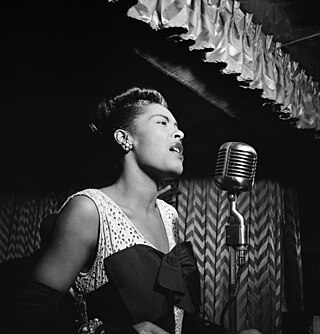
A song is a musical composition performed by the human voice. The voice often carries the melody using patterns of sound and silence. Songs have a structure to them, such as the common ABA form, and are usually made of sections that are repeated or performed with variation later. A song without instruments is said to be a cappella.

Bluegrass music is a genre of American roots music that developed in the 1940s in the Appalachian region of the United States. The genre derives its name from the band Bill Monroe and the Blue Grass Boys. Like mainstream country music, it largely developed out of old-time string music, though in contrast, it is traditionally played exclusively on acoustic instruments and also has roots in traditional English, Scottish and Irish ballads and dance tunes, as well as in blues and jazz. It was further developed by musicians who played with Monroe, including 5-string banjo player Earl Scruggs and guitarist Lester Flatt. Monroe characterized the genre as "Scottish bagpipes and ole-time fiddlin'. It's a part of Methodist, Holiness and Baptist traditions. It's blues and jazz, and it has a high lonesome sound."

In popular music, a cover version, cover song, remake, revival, or simply cover is a new performance or recording by a musician other than the original performer or composer of the song. Originally, it referred to a version of a song released around the same time as the original in order to compete with it. Now, it refers to any subsequent version performed after the original.

The term American folk music encompasses numerous music genres, variously known as traditional music, traditional folk music, contemporary folk music, vernacular music, or roots music. Many traditional songs have been sung within the same family or folk group for generations, and sometimes trace back to such origins as the British Isles, Mainland Europe, or Africa. Musician Mike Seeger once famously commented that the definition of American folk music is "...all the music that fits between the cracks."

Cajun music, an emblematic music of Louisiana played by the Cajuns, is rooted in the ballads of the French-speaking Acadians of Canada. Although they are two separate genres, Cajun music is often mentioned in tandem with the Creole-based zydeco music. Both are from southwest Louisiana and share French and African origins. These French Louisiana sounds have influenced American popular music for many decades, especially country music, and have influenced pop culture through mass media, such as television commercials.
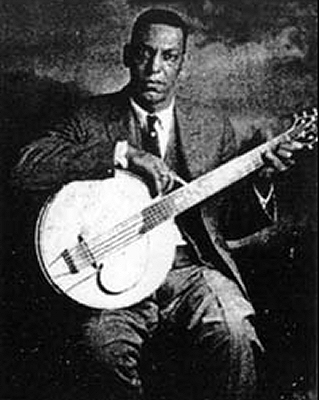
William Henry "Papa Charlie" Jackson was an early American bluesman and songster who accompanied himself with a banjo guitar, a guitar, or a ukulele. His recording career began in 1924. Much of his life remains a mystery, but his draft card lists his birthplace as New Orleans, Louisiana, and his death certificate states that he died in Chicago, Illinois, on May 7, 1938.
The music of Israel is a combination of Jewish and non-Jewish music traditions that have come together over the course of a century to create a distinctive musical culture. For almost 150 years, musicians have sought original stylistic elements that would define the emerging national spirit. In addition to creating an Israeli style and sound, Israel's musicians have made significant contributions to classical, jazz, pop rock and other international music genres. Since the 1970s, there has been a flowering of musical diversity, with Israeli rock, folk and jazz musicians creating and performing extensively, both locally and abroad. Many of the world's top classical musicians are Israelis or Israeli expatriates. The works of Israeli classical composers have been performed by leading orchestras worldwide.

Old-time music is a genre of North American folk music. It developed along with various North American folk dances, such as square dancing, clogging, and buck dancing. It is played on acoustic instruments, generally centering on a combination of fiddle and plucked string instruments, most often the banjo, guitar, and mandolin. Together, they form an ensemble called the string band, which has historically been the most common configuration to play old-time music. The genre is considered a precursor to modern country music.

Appalachian music is the music of the region of Appalachia in the Eastern United States. Traditional Appalachian music is derived from various influences, including the ballads, hymns and fiddle music of the British Isles, and to a lesser extent the music of Continental Europe.

Clarence "Tom" Ashley was an American musician and singer, who played the clawhammer banjo and the guitar. He began performing at medicine shows in the Southern Appalachian region as early as 1911, and gained initial fame during the late 1920s as both a solo recording artist and as a member of various string bands. After his "rediscovery" during the folk revival of the 1960s, Ashley spent the last years of his life playing at folk music concerts, including appearances at Carnegie Hall in New York and at the Newport Folk Festival in Rhode Island.
Richard Daniel Burnett was an American folk musician and songwriter from Kentucky.

Jim Jackson was an American blues and hokum singer, songster, and guitarist, whose recordings in the late 1920s were popular and influential on later musicians.
"I'm Alabama Bound" is a ragtime melody composed by Robert Hoffman in 1909. Hoffman dedicated it to an M. T. Scarlata. The cover of its first edition, published by Robert Ebberman, New Orleans, 1909, advertises the music as "Also Known As The Alabama Blues" which has led some to suspect it of being one of the first blues songs. However, as written, it is an up-tempo rag with no associated lyrics. The song has been recorded numerous times in different styles—both written and in sound recordings—with a number of different sets of lyrics.
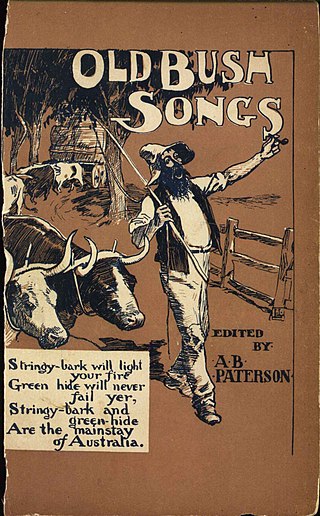
The bush ballad, bush song, or bush poem is a style of poetry and folk music that depicts the life, character and scenery of the Australian bush. The typical bush ballad employs a straightforward rhyme structure to narrate a story, often one of action and adventure, and uses language that is colourful, colloquial, and idiomatically Australian. Bush ballads range in tone from humorous to melancholic, and many explore themes of Australian folklore, including bushranging, droving, droughts, floods, life on the frontier, and relations between Indigenous and non-Indigenous Australians.
"Cumberland Gap" is an Appalachian folk song that likely dates to the latter half of the 19th century and was first recorded in 1924. The song is typically played on banjo or fiddle, and well-known versions of the song include instrumental versions as well as versions with lyrics. A version of the song appeared in the 1934 book, American Ballads and Folk Songs, by folk song collector John Lomax. Woody Guthrie recorded a version of the song at his Folkways sessions in the mid-1940s, and the song saw a resurgence in popularity with the rise of bluegrass and the American folk music revival in the 1950s. In 1957, the British musician Lonnie Donegan had a No. 1 UK hit with a skiffle version of "Cumberland Gap".

The period from the end of the First World War until the start of the Depression in 1929 is known as the "Jazz Age". Jazz had become popular music in America, although older generations considered the music immoral and threatening to cultural values. Dances such as the Charleston and the Black Bottom were very popular during the period, and jazz bands typically consisted of seven to twelve musicians. Important orchestras in New York were led by Fletcher Henderson, Paul Whiteman and Duke Ellington. Many New Orleans jazzmen had moved to Chicago during the late 1910s in search of employment; among others, the New Orleans Rhythm Kings, King Oliver's Creole Jazz Band and Jelly Roll Morton recorded in the city. However, Chicago's importance as a center of jazz music started to diminish toward the end of the 1920s in favor of New York.
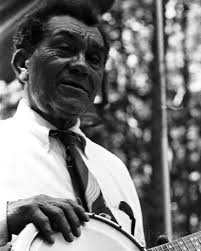
John "Uncle" Homer Walker was an American Appalachian banjo player who was popular during the folk revival of the 1960s and 1970s. Prior to his death, he was one of the last musicians to practice the old-time Appalachian style.
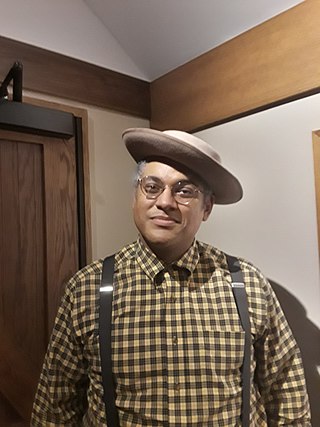
Dominique Flemons is an American old-time music, Piedmont blues, and neotraditional country multi-instrumentalist, singer, and songwriter. He is a proficient player of the banjo, fife, guitar, harmonica, percussion, quills, and rhythm bones. He is known as "The American Songster" as his repertoire of music spans nearly a century of American folklore, ballads, and tunes. He has performed with Mike Seeger, Joe Thompson, Martin Simpson, Boo Hanks, Taj Mahal, Old Crow Medicine Show, Guy Davis, and The Reverend Peyton's Big Damn Band.